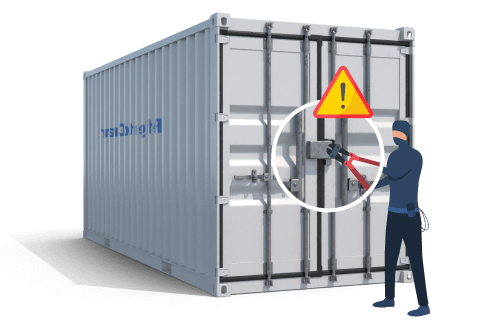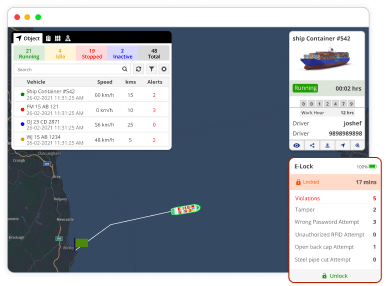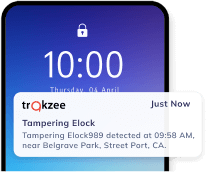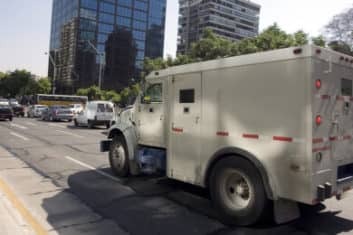Port authority manages a busy maritime port with a high volume of cargo containers arriving and departing daily. Ensuring the security of cargo containers, and preventing unauthorized access are top priorities for the port authority.
Introduction
Challenges
Security Vulnerabilities: In the absence of E-locks, cargo containers are secured using traditional mechanical locks and seals, which are prone to tampering, duplication of keys, and unauthorized access.
Lack of Real-time Visibility: It is challenging for port management to know the exact location and security status of each container.
Inefficient Operations: Port operations rely on manual inspections and physical checks, leading to delays in cargo handling. It increases labor costs, and a higher risk of human error.
Security Incidents: Theft, tampering, or unauthorized access incidents are difficult to detect promptly. This leads to potential losses, insurance claims, and damage to the port’s reputation.
Challenges

Solution
E-Lock Implementation: E-locks are installed on cargo containers arriving at the port. These E-locks are equipped with electronic keys, sensors and GPS tracking capabilities.
Real-Time Monitoring: The E-lock system allows real-time monitoring of the lock status of each E-lock. Any unauthorized attempt to open the container triggers immediate alerts.

Tampering Alerts: E-locks are tamper-evident and can trigger immediate alerts in case of tampering or unauthorized access attempts.
Reporting and Documentation: The system maintains a comprehensive database of container access and movements. Detailed reports are generated for compliance, security, and operational analysis.

Results
Improved Safety: The implementation of driver behavior monitoring significantly reduced instances of unsafe driving practices. It lead to a decrease in accidents and near misses during emergency responses.
Faster Response Times: Optimized routes and real-time tracking lead to significantly faster response times. It improved the department’s ability to save lives and mitigate property damage.


